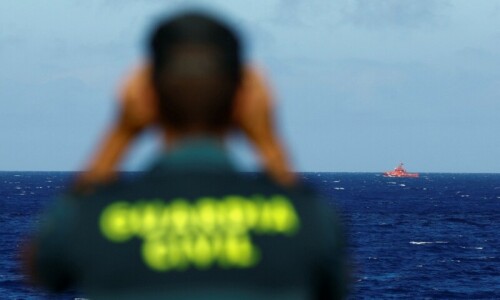IN the post-9/11 scenario, suicide bombing emerged as the deadliest and most popular terrorist strategy adopted by various groups around the world. After 9/11, there was an intensification in both the frequency and innovation of suicide bombings. Among these, the suicide vehicle-borne improvised explosive device (SVBIED) quickly became one of the most lethal weapons deployed. This sophisticated weapon requires significant technical proficiency, which leading militant organisations developed and employed effectively.
The Islamic State’s frequent use of SVBIEDs in Iraq and Syria helped the militant group attract global media attention. SVBIEDs served as a powerful force multiplier, enabling numerically inferior militants to deliver tons of explosives to designated targets and overrun larger enemy contingents. IS used SVBIEDs to punch holes in static defences, with follow-up attacks inflicting further damage on defenders.
IS tried to gain an edge over its enemies by tailoring SVBIED designs to specific threats, targets, and environments, with the aim of increasing the likelihood of the vehicle reaching its intended detonation point. For example, the covert SVBIED, the most commonly used type, features a vehicle with an unmodified exterior fitted with an interior explosive payload, driven and detonated at a specific target. The unmodified exterior allows it to blend in with other vehicles, deceiving the police and making it difficult to detect.
An up-armoured SVBIED typically has steel plates welded on the front exterior, shielding the engine block, windscreen, and tyres. These were used during conflicts in Iraq and Syria. The improvised shielding protected the vehicle, the attacker, and the fitted explosives from incoming fire until the intended point of detonation. After capturing Mosul in 2014, IS seized many military-armoured vehicles, modified them, and used them as SVBIEDs.
IS used SVBIEDs to punch holes in static defences.
A two-man SVBIED is operated by two attackers: one driver and one rooftop gunner. The gunner provides suppressing fire until the vehicle reaches its detonation point. This type of SVBIED was used in attacks against hardened military targets in Iraq and Syria. To target fortified positions, IS designed specific SVBIEDs capable of removing concrete blast barriers to clear the passage.
The militants also use parked VBIEDs, which resemble SVBIEDs but are parked at a location and detonated remotely. Parked VBIEDs lack drivers and function as larger, disguised stationary IEDs. Different vehicles provide varying storage capacities to place explosives as needed, effectively targeting and ensuring maximum damage. Usually, VBIEDs are employed by terrorists against large targets to facilitate forced entry and create significant impact.
To increase the explosion’s impact, a few SVBIEDs were designed and used on some occasions by IS with rooftop rocket pods and a firing mechanism that enabled the drivers to suppress fire from the SVBIED’s target. In some instances, explosives are mounted on the doors and windshields’ interiors to direct as much of the explosive power of the blast forward and to the sides. The payload arrangement also included crude oil to increase the primary blast effect upon detonation of the main payload and ensure that the remnants at the site were burned, causing more losses.
From 2014 to 2024, a total of 85 suicide attacks, including 26 VBIEDs, resulted in the deaths of 557 civilians and 143 policemen in KP. The highest number of VBIED attacks was eight in 2014, followed by four in 2023. Between 2014 and 2024, Peshawar faced the highest number of attacks, with 26 suicide and 11 VBIED attacks, followed by 14 suicide attacks in North Waziristan and six VBIED attacks in Bannu. Ground realities suggest that suicide bombing, including VBIEDs, is primarily an urban or bordering district phenomenon.
To prevent such incidents, Pakistan needs to revise the legal, administrative, and procedural dynamics of vehicle registration, purchase, activation and change of ownership of SIM cards, renting accommodation, drones and explosives businesses, and record-keeping of travellers. Strict enforcement is required for the regulation of auto workshops. Transparency in vehicle transactions and the prevention of vehicular theft, as well as addressing gaps in the transaction of explosives, will reduce the chances of using vehicles as moving bombs.
Employing sniffer dogs, high-tech explosive detectors, public safety education, target hardening, and redesigning the security architecture of high-profile hotels and commercial buildings, along with adherence to improved security protocols for public transport and trains, will reduce the space for terrorist groups.
The writer is the author of Pakistan: In Between Extremism and Peace.
X: @alibabakhel
Published in Dawn, May 27th, 2024













































Dear visitor, the comments section is undergoing an overhaul and will return soon.